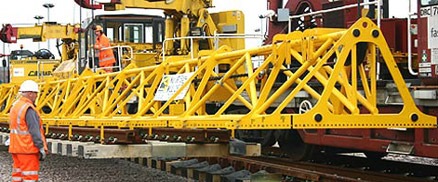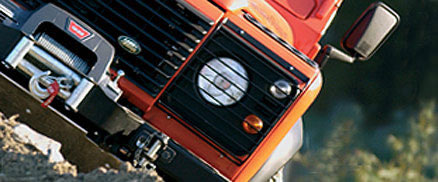June 7th, 2011
If you are planning to use height safety equipment then you need to know the basics to ensure that you are not putting yourself or your staff in danger and that you are following all health and safety regulations.
So what are the different types of height safety equipment? Follow this quick guide to learn about the types of equipment you may encounter.
Fixed Permanent Ladders
Although moveable ladders can be used in construction and other industries to reach the heights of a building, it is often better in terms of safety and efficiency to have fixed permanent ladders installed. They are permanently attached to a building or structure making access to roofs and other higher areas a lot easier and more convenient. This makes building repairs and maintenance a lot easier. As the ladder is fixed it remains steady during ascent and descent making it safer to use. With particularly high ladders often feature a safety cage at the top.
Roof Hand Rails
Roof hand rails are often installed on the roofs of tall buildings to create a safer environment for workers as they provide something to grab onto when carrying out repair works on roofs. Most buildings of a certain height are now required to have hand rails installed on the roof.
Fall Arrestors
As the name suggests these pieces of equipment are designed to arrest a fall if it should happen. The equipment is intended to stop a fall from disabling or killing someone should an accident occur. People working at height are more vulnerable to accidents and any accident that does occur can be much more harmful and sometimes fatal. This is why fall arresting safety equipment must be used at all times when working at height. This is not only a sensible safety measure but also a requirement of the law. If you are working at height or have employees working at height you must ensure that all your height safety equipment meets the health and safety requirements laid out by the law.
Lanyards
These are flexible ropes, cords and wires worn on the body. They are intended to hold an object and keep it in sight. For example when working at heights the worker will need to keep tools and equipment close by them to avoid having to travel up and down a ladder several times. In addition the use of Lanyards ensure that if workers lose their grip on their tools at any time they will not fall to the ground and injure anyone passing below.
Tags: eqipment hire, fall arrestors, height safety, lanyards, roof hand rails
Posted in Arbil Lifting Gear |
May 13th, 2011
If you are hiring or purchasing safety equipment there are several types of hoist that you can choose from.
Read this quick handy guide to learn more about hoists and discover which is the right one for you.
1 Hand Chain Hoists
Hand Chain Hoists are modern and lightweight and can lift a range of weights from 500kg right up to 50 tonnes. The standard heights of lift include 3m, 6m, 12m and 18m. Hand Chain Hoists are lightweight and easy to handle and generally come equipped with grade 80-100 alloy load chain.
2 Lever Hoists
Lever Hoists are operated by a lever handle and are able to lift in all angled positions including upside down. They can be used for lifting, pulling, lashing or tensioning. They have an excellent strength to weight ratio and work well in most environments including extreme weather conditions.
3 Electric Chain Hoists
Electric Chain hoists vary depending on the capacity and voltage required. They are also available to suit various heights and weights or to be utilised above or below ground. They include heavy duty motors, adjustable brakes, emergency stop button and case hardened zinc plated chain.
4 Air Chain Hoists
Air chain hoists are available to suit different capacities and height of lift. They can also be purchased for above or below ground use and to be suitable for different lengths of pendant control. The standard height of lift includes 3m, 6m, 12m, 15m and 18m. This hoist has an excellent strength to weight ratio and is not susceptible to contamination, humidity or aggressive ingress.
5 Power Operated Wire Rope Hoists
These hoists are portable and powerful. In particular the Minifor range has a self -gripping system which provides grip on the wire in proportion to the weight of the load. This means that the wire is perfectly aligned to the pulley system. The length of the wire rope is also unlimited.
6 Scaffold Hoist
Scaffold hoists have a lightweight and compact design and feature automatic upper and lower limit switches. They have a dynamic and mechanical brake and top clamp assembly that is usable on all standard scaffold poles. They also feature an optional swing arm jib which fits directly to standard vertical scaffold poles.
7 Builders Hoists (Trestle Hoists)
Trestle Hoists feature a top limit switch and a three button pendant control. They have a low noise level and a robust heavy duty motor which make them ideal for continuous work.
Tags: air chain hoists, hand chain hoists, lever hoists, lifting gear
Posted in Arbil Lifting Gear |
April 21st, 2011
Falls are a leading cause of deaths in the workplace but can always be avoided if all the correct safety precautions are taken.
Whilst the majority of falls occur in the construction industry, they do occur in other workplaces where people have been known to fall off roofs, ladders, through openings in floors or walls and from scaffolds.
If there is any possibility of your staff being exposed to the possibility of a dangerous or fatal fall then you need to provide training.
There are various health and safety procedures which must be followed with regards to supplying hand rails and guard rails and the wearing of hard hats, harnesses and other safety equipment.
A comprehensive training programme will teach you and your staff all about the correct health and safety procedures and equipment you need to utilise. It will also ensure all equipment is used correctly and any avoidable dangers are avoided.
Fall Protection Training should include:
Recognising Potential Workplace Hazards.
If you are responsible for safety in your workplace then you should carefully inspect all working areas and take note of any potential hazards. After deciding on potential risks you should try to minimise them as much as possible.
Fall Protection Training
All employees who use gall protection equipment should receive extensive training, Ensure that your staff understand how to use all safety equipment and have practiced using it. If your staff are using harnesses, Lanyards and other equipment they should receive training that qualifies them to inspect their equipment before they begin work. Training will also introduce them to working at height, which can be a very different experience from working at ground level.
Any fall protection training should also inform your staff about CE standards and test requirements and give staff an overview of legislation, regulations and codes of practice surrounding fall protection safety.
As well as the official training you and your staff should have, you need to encourage them to use their common sense and develop a strong sense of safety. It’s often when we let our guards down that accidents happen so encourage your staff to keep vigilant and always be aware of their own safety and the safety of those around them.
Tags: fall protection safety, fall protection training
Posted in Arbil Lifting Gear |
April 1st, 2011
Slings are available in different sizes, different materials and different widths. You can buy slings in single, two, three and four leg form. Below are the different types of slings that are available.
Roundslings
Roundslings are an endless loop of yarn which are covered by a woven tubular jacket. One advantage to round slings is that all of the load-bearing yarns are protected by this jacket. Round slings use polyester load yarns that are protected by a double wall, polyester cover. Sizes larger than this use an abrasion-resistant nylon, double wall jacket. All round sling jackets are color-coded along industry standards to indicate their capacity rating. While the standard configuration is endless, they are also available in eye & eye and braided styles.
Most roundslings have high strength, Aramid fibers for their load bearing yarns. These slings are the strongest and lightest slings in the world, with the lowest sling weight per capacity rating. Orange colored, double wall jackets for all sizes indicate that these slings have Aramid load bearing yarns. Tuff-Tags are standard on these, and all synthetic slings.
Wire Rope Slings
Wire Rope Slings are mainly found at construction sites because of their low cost and resistance to abrasion in construction work environments. High tensile strength steel wires are combined in various constructions to form ropes with specific characteristics. Standard constructions for slings are referred to as 6X19 or 6X36, designating the total number of wires being used. The greater the number of wires, the greater the flexibility and the lower the resistance to abrasion. Typical sling ropes use 6X19 in the smaller diameters and 6X37 at 1 ¼” diameter and larger.
Eye & Eye style slings are the most popular, but numerous end fittings are available to suit specific needs.
Chain Slings
The most appropriate type of sling that is used in extreme conditions where a normal sling would not last. Typical environment would be foundries and steel mills. Material used in chain slings is typically high strength alloy specific for the lifting industry.
Posted in Arbil Lifting Gear |
February 23rd, 2011
Although chain slings are designed for rugged, lasting service, precautions should be observed to extend the product’s useful life. Certain hazards are inherent in the operation of chain slings and users must exercise intelligence, care and common sense to ensure a safe working environment.
- Never exceed the working load limit of a chain sling.
- All fittings and attachments must have a working load limit (WLL) equal to or greater than that of the chain; if not, the assembly must be rated at the WLL of the weakest component.
- Do not rest or drop load on chain.
- Eliminate all twists, knots or kinks before lifting.
- Do not point load hooks – load should be seated properly within throat opening and centered in bowl of the hook.
- Balance the load to avoid undue stress on one leg of multi-leg slings.
- Use pads around sharp corners.
- Do not use in acid solutions. Consult manufacturer for recommendations.
- If possible, avoid extreme temperatures (under 20 degrees F or over 350 degrees F).
- Temporary and permanent reductions to working load limits occur when chain slings are used at high temperatures.
- Return slings to manufacturer to ensure proper repair procedures are followed.
- Clean chain slings regularly since dirt and grit can cause wear at link bearing points.
- Protect chain from corrosion.
- Store chain slings in a clean, dry area, preferably by hanging on racks or A-frames; slings stored on floors are subject to abuse.
Posted in Arbil Lifting Gear |


